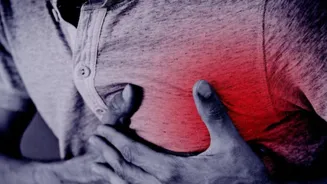If you’re in your 20s or 30s, you might only think about your heart during an intense workout or when trying to hit a new personal best. But this tireless muscle works every second of your life, quietly
powering your every moment. It deserves more than just an occasional thought. No matter your age, your heart needs consistent care.
According to the World Health Organisation, cardiovascular diseases (CVDs) affect around 17.9 million people annually. In India, the situation is particularly alarming: we account for 60% of the world’s heart disease cases, and Indians tend to develop heart problems at a younger age than populations in Western countries. Dr. Rajneesh Malhotra, Chairman & Head, Cardio Thoracic and Vascular Surgery, Max Super Speciality Hospital, Saket, Delhi, warns, “With the speed and direction of our lives in the present time, stressors and cardiovascular diseases can only be anticipated to grow, unless we take a conscious step towards altering the path of our cardiac health.”
Understanding Heart Failure
Heart failure occurs when the heart becomes too weak or stiff to pump blood efficiently. It can result from conditions such as high blood pressure, blocked arteries, heart rhythm problems, or congenital defects. The body tries to compensate by enlarging the heart, pumping faster, or diverting blood to vital organs, but these measures are temporary. In India, younger adults are increasingly affected, often due to lifestyle choices: chronic stress, poor sleep, unhealthy diets, and lack of exercise all contribute to risk.
Lifestyle and Medical Interventions
Early detection is critical. Managing blood pressure, blood sugar, cholesterol, and stress levels, along with regular exercise and adequate sleep, can dramatically lower the risk. For those already diagnosed, medicines, dietary adjustments, and cardiac rehabilitation programmes can slow disease progression.
The Role of Technology
For patients with advanced heart failure, a heart transplant is often the gold standard, but long donor waitlists and health constraints limit access. Left Ventricular Assist Devices (LVADs), surgically implanted pumps that help circulate blood, are transforming treatment. Once seen as a short-term “bridge” to transplant, LVADs are now used as long-term, “destination” therapy.
Recent innovations have made these devices smaller, safer, and more efficient, reducing complications and improving quality of life. Patients can return to many normal activities, with survival rates steadily improving. For many, LVADs offer not just extended life, but renewed independence and hope.

